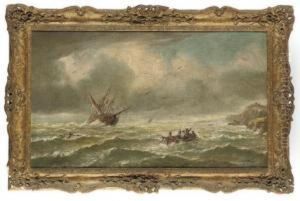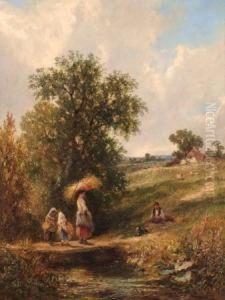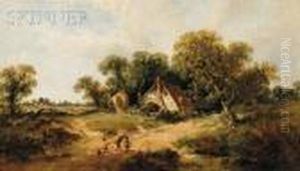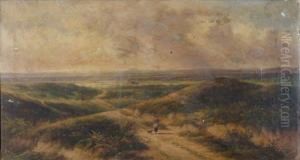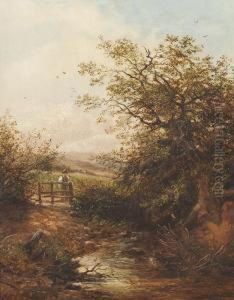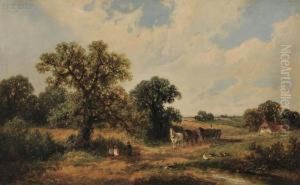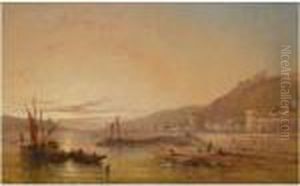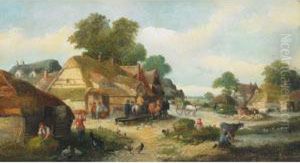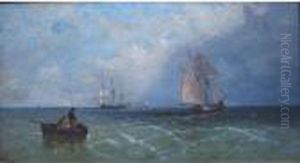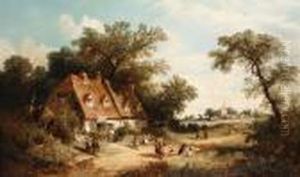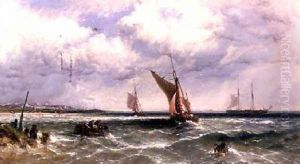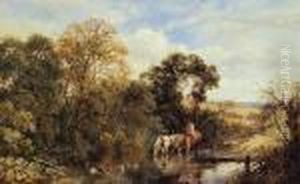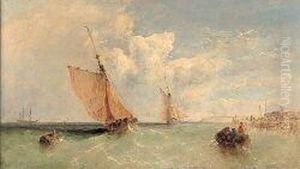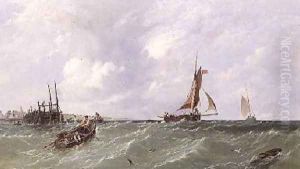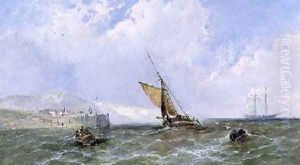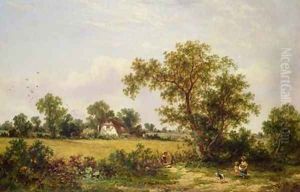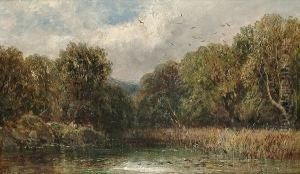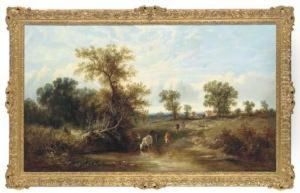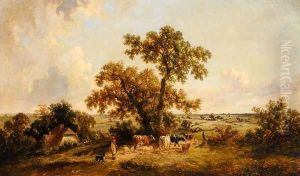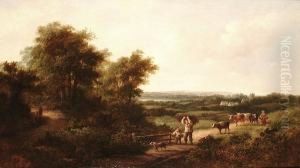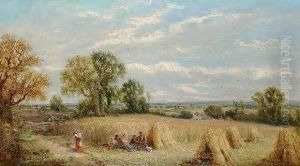James Edwin Meadows Paintings
James Edwin Meadows was a British landscape painter born in 1828. He was part of the Meadows family of artists, including his father (James Meadows, Sr.) and brother (Alfred Meadows). Meadows is particularly known for his serene and picturesque landscape paintings that often depicted English and Welsh countryside scenes.
Meadows received his artistic training from his father, who was also a landscape artist, and began exhibiting his work at the Royal Academy and the British Institution from a young age. His style was influenced by the pastoral scenes of the 17th-century Dutch school, but he adapted these influences to reflect the British landscapes. Meadows' work is characterized by its attention to detail, use of light, and the peaceful ambiance of rural settings. He was skilled in capturing the changing moods of the countryside, often portraying the beauty of nature in different seasons and times of day.
Throughout his career, Meadows maintained a strong presence in London's art circles. He exhibited his work frequently and gained a loyal following among art collectors and enthusiasts. His paintings were not only popular in Britain but also found an audience abroad, particularly in North America.
Despite his success, Meadows remained a relatively private figure, and not much is documented about his personal life. He continued to paint until his death in 1888. Today, James Edwin Meadows is remembered for his contribution to British landscape painting in the 19th century, and his works are collected and appreciated for their tranquil beauty and historical value. They can be found in various art galleries, museums, and private collections around the world.
